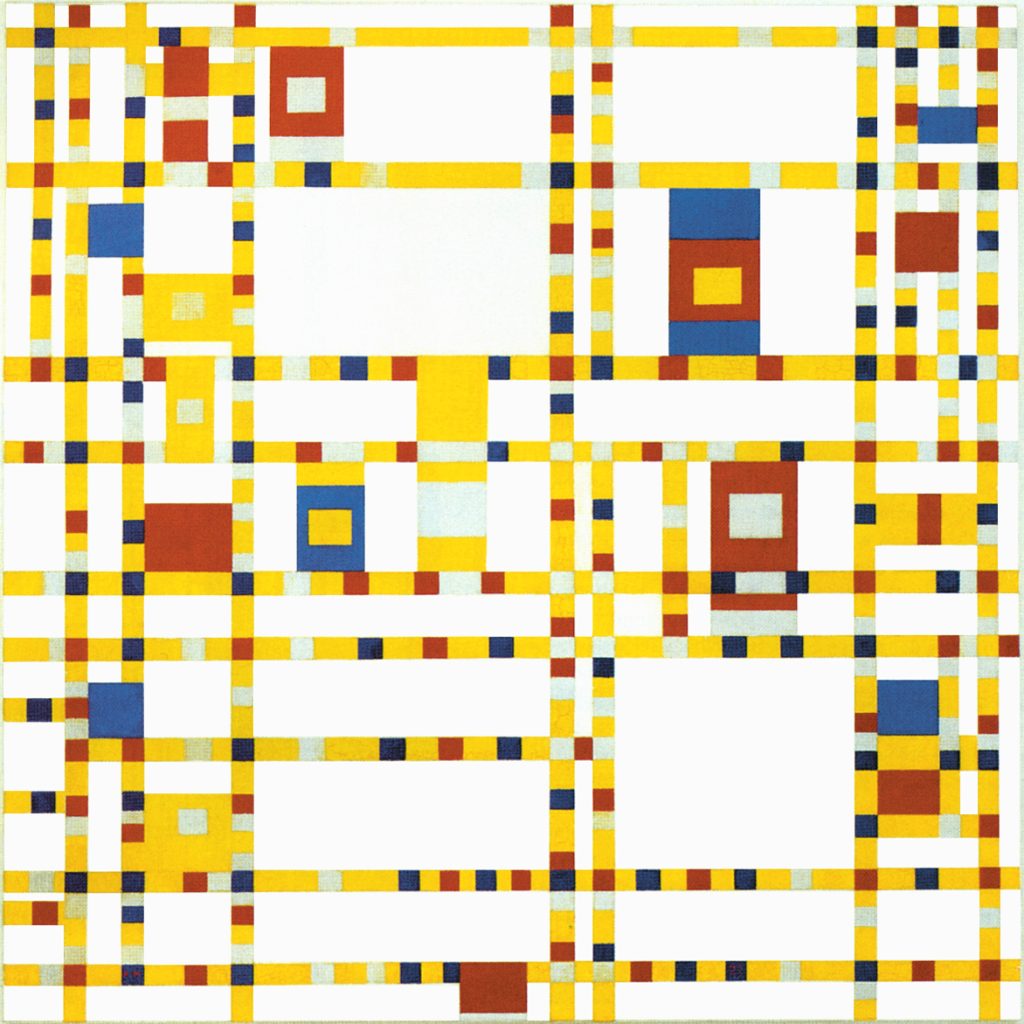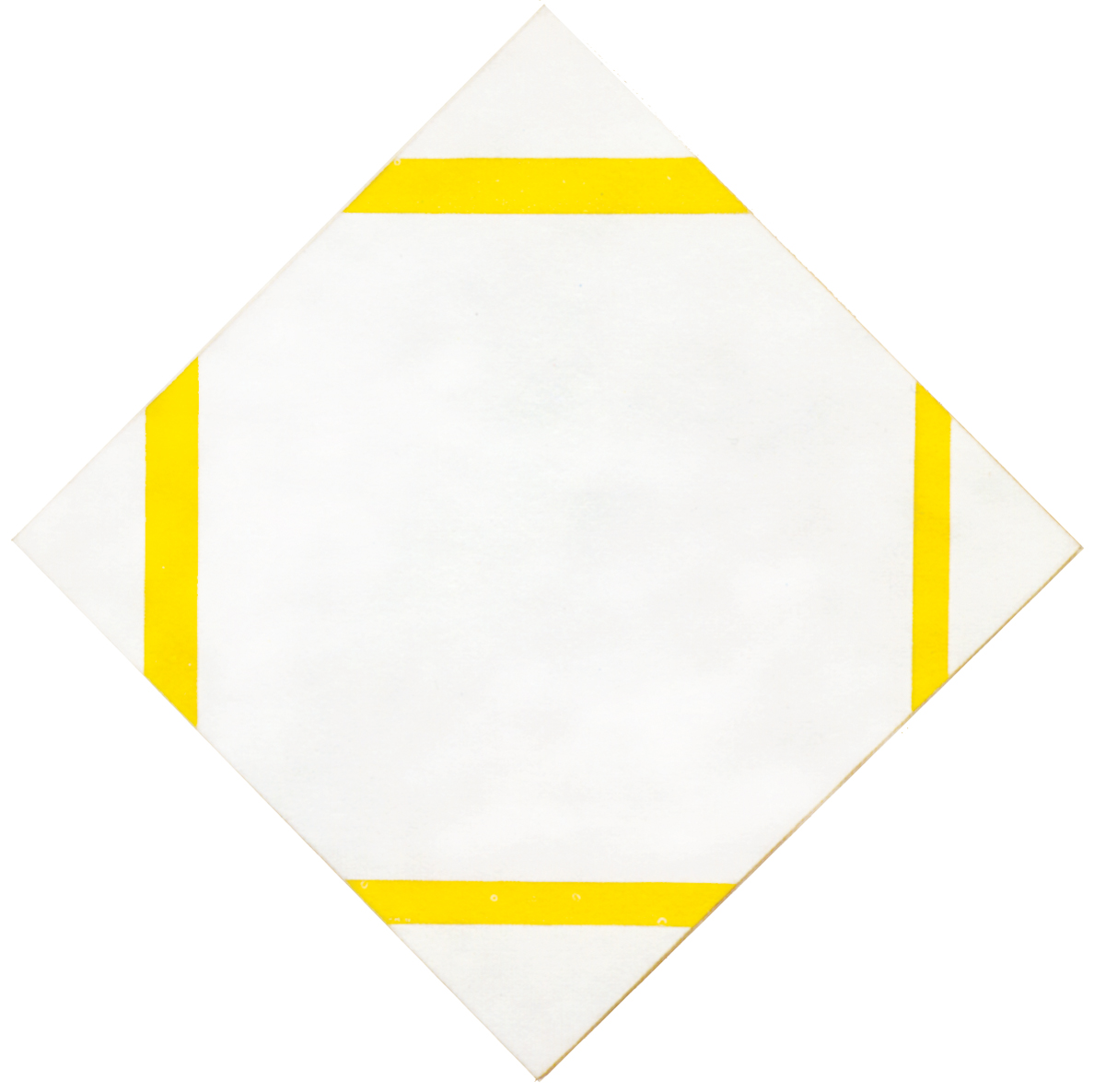Expressing the imponderable with utmost precision
When I describe the transformations of space that are observed in Broadway Boogie Woogie, I speak of lines, squares, and larger areas of color:

As I proceed in describing the different parts that make up the whole I cannot help but separate each individual part from the rest. In reality, the geometry of the painting is an uninterrupted whole.
It is not the small square that do this or that but, rather, the same space that manifests itself here in the form of a line and there in the form of a square, now as infinite and now as finite space. A space that with the straight lines manifests itself as a dynamic structure which then concentrates and reaches a more stable condition with the planes of color and then reopens and expands again.
In certain areas of that space the squares or the larger color planes stretch, produce or transform, but we could say that they are stretched, produced, transformed by the continuum of which they are part.
Agent, action and thing acted upon
The space is not a given empty space; it does not pre-exist to its parts which eventually fill it up; Neoplastic space is rather a unique dynamic entity that signals its becoming now through lines and now through squares or planes.
In Broadway Boogie Woogie the agent, the action and the thing acted upon are a single, inseparable process, a symbol of the vital energy that envelops, penetrates and flows from one entity to another and between all individuals and all natural forms in a single and immeasurable overall design that human thought can never represent if not by dividing and separating one thing from another. It is a continuum in which every entity acting at one point is simultaneously acted upon by other entities. By necessity we isolate, divide and measure fragments of the whole by talking about causes and effects, subject and object, before and after, here and there.
Cause and effect
In Broadway Boogie Woogie cause and effect are two aspects of the same process and we should always say, as certain Japanese sages say, that it is not the writer who writes the book, but that book “writes itself” through the writer.
In everyday life we believe we respond to our intentions and it is true; but if we could observe things from another point of view, we would realize that our intentions do not always depend exclusively on our will. At the level of everyday life, each individual and his or her experiences appear to be unique facts, thought and willed autonomously and independently but, from another point of view, all individuals and their continuous interaction turns out to be one flow of interconnected events that inscrutably influence each other.
An infinite process
I think of the space of Broadway Boogie Woogie in which I see a representation of the incessant exchange of energy that, in every place and at every moment, is generated between living beings; each one subtracts a crumb of energy from someone and then gives it back to someone else.
True abstract composition exhorts us to see existence as an infinite process of an unimaginable variety rather than limiting ourselves to just a few parts of it as realistic or figurative painting does.
The visible and the invisible
Those circuits that are formed, those glances, those gestures that at every moment cross and are lost between individuals, in harmony or sometimes in open contrast with our inner space, are an example of that continuum in which it is not possible to separate the outside from the inside, one thing from another. Of this infinite structure, each of us is an infinitesimal part. We cannot grasp this reality as a whole, also because it is an open structure in continuous transformation; however, it is very present and influences us through and on us.
How to represent such a reality? Fleeting and at the same time omnipresent; a flexible structure that continuously expands and contracts, made of visible and invisible; energy in constant transformation that relentlessly flows between individuals uniting them in one great breath that Japanese wisdom calls KI.
The pulsing geometry of Broadway Boogie Woogie is a snapshot of all this.
Painting makes concrete what in life, by its nature, eludes all definition.
Art can make visible what is impossible for us to stop and touch. I think of Paul Klee‘s statement:“art makes visible the invisible”.
back to reflections
Copyright 1989 – 2024 Michael (Michele) Sciam All Rights Reserved More
